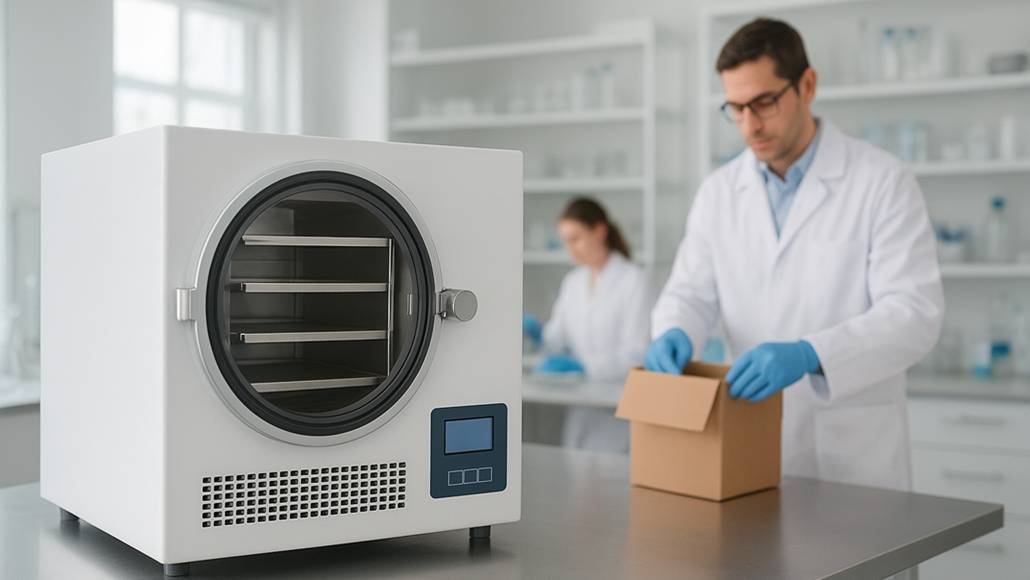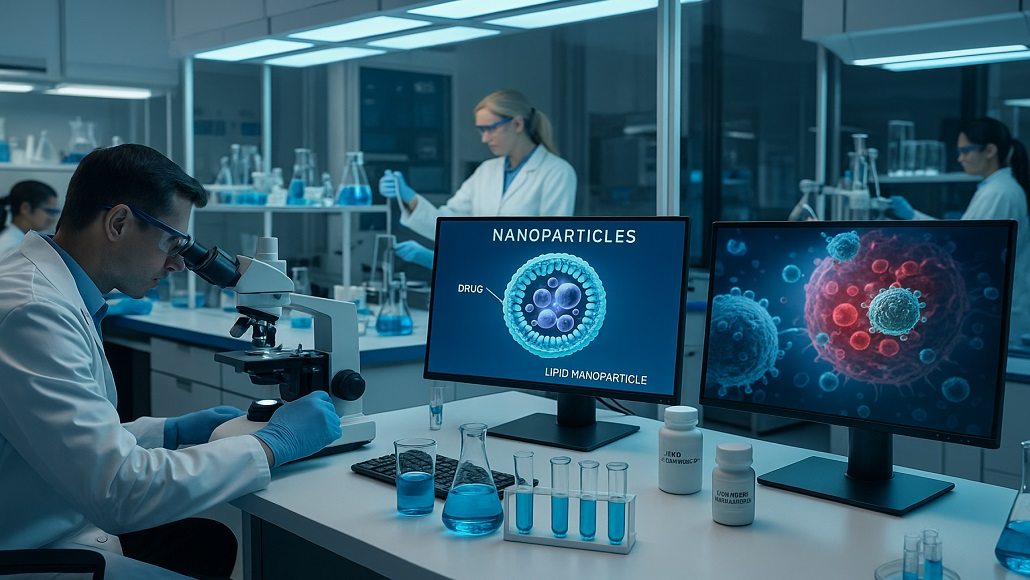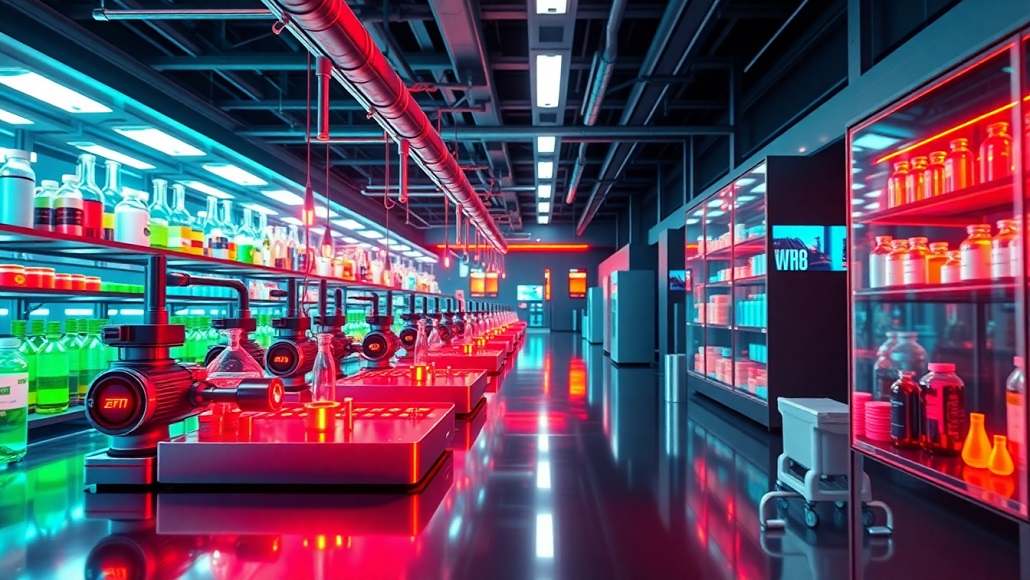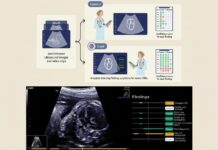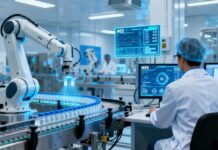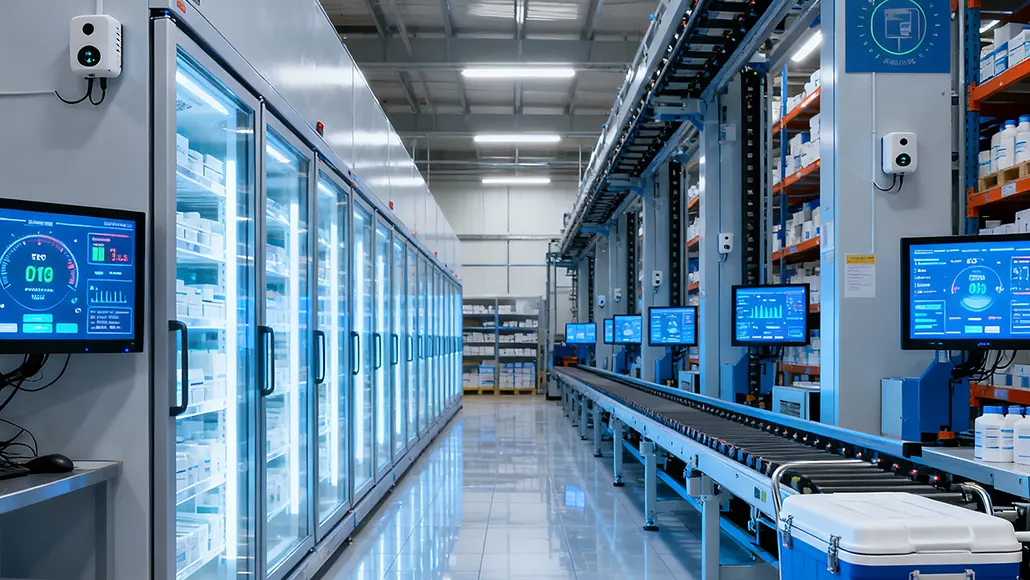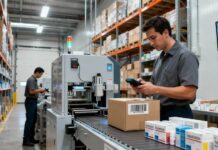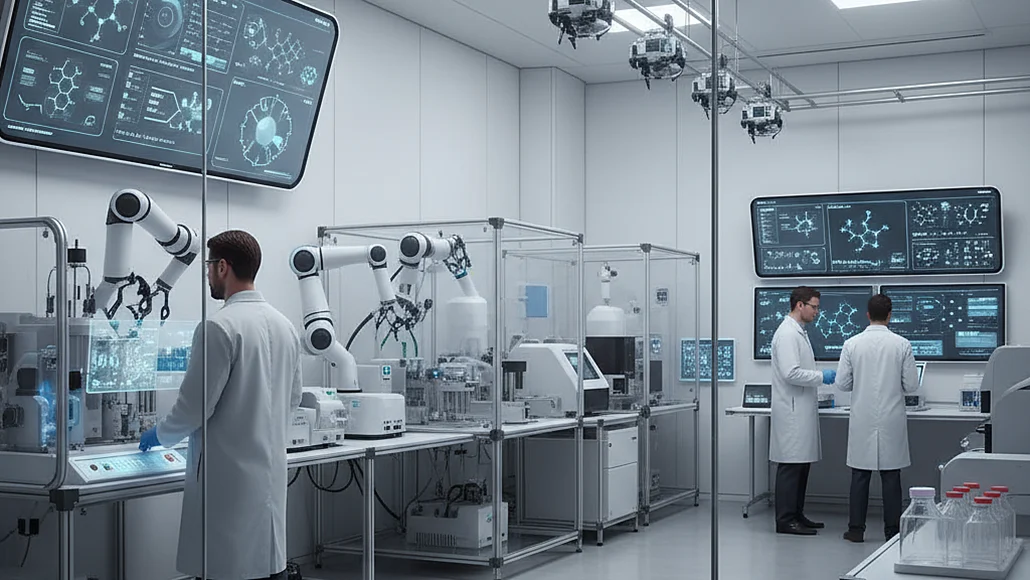Smart Labs of the Future: Digital Transformation in R&D Facilities
The pharmaceutical research and development laboratory stands at the epicenter of a profound digital transformation that promises to fundamentally reshape how scientific discoveries progress from initial concepts to viable therapeutics. As pharmaceutical companies worldwide invest billions of dollars annually in research and development, the efficiency, productivity, and innovation capacity of laboratory operations directly impact the industry’s ability to develop new medicines and bring them to patients. Smart pharma labs, characterized by the integration of advanced automation, digital connectivity, artificial intelligence, and data analytics, represent not merely an incremental improvement over traditional approaches but a wholesale reimagining of pharmaceutical research infrastructure and workflows. This transformation extends across every stage of the drug development pipeline, from target identification and lead discovery through preclinical testing and process development.
The business case for smart lab transformation rests on compelling potential improvements across multiple key performance indicators. Industry analyses suggest that well-implemented laboratory automation and digitalization can boost productivity by 50 to 100 percent for well-performing facilities, with even larger improvements of 150 to 200 percent achievable for average-performing laboratories. Beyond these productivity gains, smart lab technologies enable substantial improvements in data quality, reproducibility, and regulatory compliance while simultaneously reducing cycle times and accelerating the pace of innovation. The combination of shorter development timelines, higher success rates, and improved operational efficiency translates directly into competitive advantages for pharmaceutical companies operating in increasingly challenging market environments.
The Evolution from Manual to Smart Laboratory Operations
Traditional pharmaceutical research laboratories have relied heavily on manual processes executed by skilled scientists using benchtop equipment and paper-based documentation systems. While this model has supported pharmaceutical innovation for decades, it suffers from inherent limitations including low throughput, high variability, limited reproducibility, and extended cycle times. Manual pipetting, sample preparation, and analytical testing require substantial scientist time while introducing opportunities for human error that can compromise data quality and experiment reproducibility. Paper-based documentation creates challenges for data sharing, analysis, and long-term preservation while complicating regulatory compliance efforts.
The transition toward smart laboratory operations begins with automation of repetitive, time-consuming tasks that consume disproportionate amounts of scientist effort while offering limited intellectual challenge. Liquid handling robots can execute pipetting operations with precision and consistency far exceeding manual capabilities, enabling scientists to focus on experimental design and data interpretation rather than mechanical sample manipulation. Automated sample preparation systems similarly remove bottlenecks in analytical workflows, improving both throughput and reproducibility. These foundational automation capabilities create the infrastructure upon which more sophisticated smart lab systems can be built.
Digital connectivity among laboratory instruments, automation systems, and data management platforms represents the next critical layer of smart lab infrastructure. Traditional laboratories often operated with isolated equipment where data remained trapped in individual instruments or stored in scattered files across multiple computers. Smart labs implement integrated data platforms that automatically capture, contextualize, and preserve experimental data from all connected instruments and automation systems. This seamless data flow eliminates manual transcription errors, accelerates data availability for analysis, and creates comprehensive digital records that support both scientific understanding and regulatory compliance requirements.
The integration of artificial intelligence and advanced analytics transforms the captured data into actionable insights that guide experimental design and decision-making. Machine learning algorithms can identify patterns and relationships within complex datasets that would be virtually impossible for human researchers to discern through manual analysis. Predictive models built on historical experimental data enable optimization of assay conditions, prediction of compound properties, and prioritization of experimental approaches with highest probability of success. The combination of comprehensive data capture with intelligent analytics creates feedback loops that continuously improve laboratory productivity and scientific output.
Robotics and High-Throughput Automation Platforms
Laboratory robotics have evolved dramatically from simple liquid handlers to sophisticated integrated automation platforms capable of executing complex experimental workflows with minimal human intervention. Modern robotic systems can coordinate multiple instruments including liquid handlers, plate readers, mass spectrometers, and analytical equipment to perform complete assay workflows from sample preparation through data analysis. These integrated platforms enable high-throughput screening campaigns that evaluate thousands or tens of thousands of compounds in timeframes measured in days rather than months required for manual approaches.
The pharmaceutical industry’s drug discovery efforts particularly benefit from high-throughput automation capabilities. Screening large chemical libraries against biological targets represents a foundational activity in identifying potential drug candidates, but the scale of modern screening campaigns makes manual approaches impractical. Automated screening platforms can evaluate compound libraries containing millions of molecules, identifying hits that demonstrate desired biological activity. The consistency and quality control enabled by automation substantially improve the reliability of screening results, reducing false positives and false negatives that can misdirect subsequent development efforts.
Beyond screening applications, robotic automation extends throughout pharmaceutical research workflows including protein expression and purification, crystallography, formulation development, and analytical method development. Each application presents unique technical requirements and workflow complexities, driving continued innovation in robotic system capabilities. Collaborative robots designed to work safely alongside human scientists in shared workspaces represent one emerging trend, enabling flexible automation that can be readily reconfigured as experimental needs evolve. These systems complement rather than replace human scientists, handling routine aspects of experiments while researchers focus on higher-level experimental design and interpretation.
The integration of robotics with artificial intelligence enables increasingly autonomous laboratory operations where systems can plan and execute experiments with minimal human oversight. AI-driven experimental design algorithms can propose optimal experiments to test scientific hypotheses, with robotic systems executing the planned experiments and feeding results back to the AI for analysis and refinement of subsequent experimental plans. This closed-loop approach accelerates optimization processes for applications ranging from assay development to formulation optimization. While fully autonomous laboratories remain aspirational, incremental progress toward self-driving experimentation continues through integration of AI planning capabilities with robotic execution systems.
Digital Twin Technologies and Virtual Experimentation
Digital twin technologies create virtual representations of physical laboratory systems, processes, or products that can be used for simulation, optimization, and predictive analysis. In pharmaceutical research and development, digital twins enable researchers to conduct virtual experiments that predict outcomes before committing resources to physical experimentation. This capability proves particularly valuable for complex processes such as biopharmaceutical manufacturing where physical experiments consume substantial time and resources while process optimization requires evaluating numerous parameter combinations.
Process digital twins for pharmaceutical manufacturing simulate how production systems will respond to changes in operating parameters, raw material properties, or equipment configurations. Engineers can use these virtual models to optimize production processes, predict quality outcomes, and identify potential failure modes without disrupting actual manufacturing operations. The integration of real-time data from production equipment with digital twin models enables continuous refinement of virtual representations, improving prediction accuracy and supporting real-time process optimization. This combination of simulation capabilities with empirical validation creates powerful tools for accelerating process development and troubleshooting production challenges.
Molecular digital twins represent another application domain with significant potential for pharmaceutical research. These detailed computational models of individual molecules or biological systems enable prediction of chemical properties, biological activity, and potential safety liabilities before compounds are synthesized. The combination of quantum mechanical calculations, molecular dynamics simulations, and machine learning predictions creates comprehensive virtual profiles of candidate molecules. Researchers can screen virtual compound libraries, optimize molecular properties in silico, and prioritize synthesis of candidates with highest probability of meeting target profiles. This virtual screening and optimization dramatically reduces the number of physical synthesis and testing cycles required to identify viable drug candidates.
The convergence of digital twin technologies with augmented and virtual reality creates new paradigms for human interaction with computational models and laboratory systems. Researchers can visualize molecular structures, protein-ligand interactions, or process simulations in three-dimensional immersive environments that facilitate intuitive understanding of complex systems. Virtual reality training simulations enable scientists to practice laboratory procedures or equipment operation in risk-free virtual environments before working with physical systems. Augmented reality overlays can provide real-time guidance and information to laboratory personnel during experimental procedures, improving both efficiency and quality.
Laboratory Information Management and Electronic Laboratory Notebooks
The foundation of smart laboratory operations rests on robust information management systems that capture, organize, and preserve experimental data and associated metadata. Laboratory Information Management Systems serve as centralized repositories for sample tracking, analytical results, and quality control data, ensuring traceability throughout research and development workflows. These systems automate many administrative aspects of laboratory operations including sample registration, work assignment, result approval, and report generation, freeing scientists to focus on scientific activities rather than administrative tasks.
Electronic Laboratory Notebooks replace traditional paper notebooks with digital systems that capture experimental protocols, observations, data, and conclusions in structured electronic formats. Modern electronic notebook systems integrate with laboratory instruments and automation platforms to automatically incorporate experimental data, eliminating manual transcription while creating comprehensive digital records of research activities. The structured nature of electronic data enables powerful search and analysis capabilities, allowing researchers to readily locate previous experiments, identify relevant historical data, and learn from prior work. Version control and audit trail capabilities ensure data integrity while supporting regulatory compliance requirements for pharmaceutical development.
The integration of Laboratory Information Management Systems with Electronic Laboratory Notebooks and other laboratory systems creates unified digital platforms that support end-to-end research workflows. Scientists can design experiments in electronic notebooks, automatically generate sample lists and work orders in laboratory information management systems, execute experiments using connected automation platforms, and have results automatically populated back into electronic notebooks with complete traceability from raw data through analytical results to scientific conclusions. This seamless integration dramatically reduces administrative burden while improving data quality and compliance.
Advanced analytics and artificial intelligence capabilities built into modern laboratory information management platforms transform data repositories into active knowledge systems that support research decisions. Machine learning models trained on historical experimental data can predict likely outcomes of planned experiments, suggest optimal experimental conditions, or identify unusual results that may indicate quality issues or equipment problems. Natural language processing applied to electronic notebook entries can extract structured information from unstructured text, enabling analysis of experimental protocols and correlation of methodological details with experimental outcomes. The combination of comprehensive data capture with intelligent analytics accelerates learning from experimental results and supports continuous improvement of research processes.
Enabling Technologies for Smart Lab Connectivity
The Internet of Things technologies provide the connectivity infrastructure that links laboratory instruments, automation systems, sensors, and software platforms into integrated smart lab ecosystems. Sensors embedded in equipment monitor performance parameters, environmental conditions, and process variables, generating continuous streams of data that inform equipment maintenance, quality monitoring, and process optimization. Wireless connectivity enables flexible laboratory configurations where equipment can be readily relocated without rewiring, supporting agile laboratory operations that can quickly adapt to changing research priorities.
Cloud computing platforms provide scalable, cost-effective infrastructure for storing, processing, and analyzing the vast quantities of data generated by smart laboratories. The computational demands of advanced analytics, machine learning model training, and molecular simulations often exceed capabilities of on-premises computing resources, making cloud platforms attractive for handling peak computational loads. Cloud-based software delivery models enable rapid deployment of new capabilities and simplified maintenance compared to traditional on-premises software installations. However, pharmaceutical companies must carefully address data security and intellectual property protection concerns when utilizing cloud services for sensitive research data.
Edge computing architectures complement cloud platforms by enabling data processing and decision-making at or near data sources rather than requiring transmission to centralized cloud systems. This approach proves particularly valuable for applications requiring real-time responsiveness or involving large data volumes where transmission delays or bandwidth constraints would prove problematic. Laboratory automation systems can incorporate edge computing capabilities that enable autonomous operation and immediate response to process deviations without dependence on network connectivity to external systems. The combination of edge and cloud computing creates hybrid architectures that balance local responsiveness with centralized analytics and management capabilities.
Interoperability standards play crucial roles in enabling integration of diverse laboratory instruments, automation systems, and software platforms from multiple vendors. Industry initiatives have developed data exchange standards and communication protocols that facilitate plug-and-play connectivity among laboratory systems. However, gaps and inconsistencies in standards implementation continue to create integration challenges that require custom interface development and ongoing maintenance. Continued evolution and adoption of interoperability standards remains important for realizing the full potential of smart laboratory ecosystems.
Quality, Compliance, and Data Integrity in Digital Laboratories
Pharmaceutical research and development operates under stringent regulatory frameworks that govern data quality, documentation practices, and quality management systems. The transition from paper-based to digital laboratory operations introduces new considerations for ensuring regulatory compliance while maintaining data integrity throughout research workflows. Regulatory guidance documents addressing computerized systems in pharmaceutical operations provide frameworks for validating software and ensuring that electronic records and signatures meet regulatory requirements.
Computer system validation represents a critical activity for pharmaceutical companies implementing smart laboratory systems. Validation processes verify that software, automation systems, and integrated platforms function as intended and consistently produce accurate, reliable results. The traditional approach to computer system validation has been criticized as overly burdensome and focused on extensive testing documentation rather than risk-based quality assurance. Recent regulatory guidance promoting computer software assurance emphasizes critical thinking and risk-based approaches that focus validation efforts on aspects with greatest potential to impact product quality or data integrity while reducing unnecessary documentation burdens.
Data integrity principles including attributability, legibility, contemporaneity, originality, and accuracy guide design and operation of smart laboratory systems. Electronic systems must ensure that data can be reliably attributed to the individuals who generated it, remains permanently readable throughout required retention periods, is recorded at the time activities occur rather than retrospectively, preserves original observations without loss of information, and accurately represents actual experimental observations and results. Well-designed digital systems can more effectively ensure data integrity compared to paper-based approaches by automatically timestamping entries, preventing unauthorized alterations, and maintaining comprehensive audit trails of all data access and modifications.
Cybersecurity considerations have grown increasingly important as pharmaceutical research systems become more connected and digitalized. Protecting intellectual property, maintaining data confidentiality, and ensuring system availability all require robust cybersecurity practices. Pharmaceutical companies must implement layered security controls including network segmentation, access controls, encryption, and security monitoring while educating personnel about cybersecurity risks and safe computing practices. The consequences of successful cyberattacks on pharmaceutical research operations could include theft of valuable intellectual property, disruption of research activities, or compromise of data integrity with potential impacts on patient safety.
The Human Element in Smart Laboratory Transformation
Despite extensive automation and digitalization, human expertise, creativity, and judgment remain central to pharmaceutical research and development. The objective of smart laboratory transformation is not to replace scientists but to amplify their capabilities by automating routine tasks, providing better tools and information, and enabling focus on intellectually challenging aspects of research. Successful smart lab implementations recognize that technology serves to support and empower human researchers rather than displacing them.
Change management and organizational culture represent critical success factors for smart laboratory implementations. Scientists and technical staff may initially resist new technologies and workflows, particularly when they perceive changes as threats to established practices or job security. Effective change management approaches engage personnel early in planning processes, communicate clear visions for how new capabilities will enhance rather than diminish their roles, provide comprehensive training and support, and celebrate early successes that demonstrate value. Organizations with cultures that embrace innovation and continuous improvement generally experience smoother transitions to smart laboratory operations compared to those with more conservative, change-resistant cultures.
Workforce development ensures that laboratory personnel possess skills and knowledge needed to effectively utilize smart lab technologies. Training programs must address both technical skills for operating new equipment and software systems and broader competencies including data analysis, statistical methods, and scientific informatics. Cross-training that provides researchers with exposure to multiple technology platforms and workflows enhances organizational flexibility and resilience. Partnerships between pharmaceutical companies and educational institutions help ensure that new graduates enter the workforce with relevant digital competencies while also providing continuing education opportunities for experienced professionals.
The evolution of researcher roles in smart laboratories reflects shifting emphasis from manual experimental execution toward experimental design, data analysis, and scientific interpretation. As automation systems handle more routine aspects of experiments, scientists increasingly focus on asking important research questions, designing experiments to address those questions, analyzing complex datasets to extract insights, and translating findings into actionable decisions. This shift toward more cognitively demanding activities requires different skill sets and potentially different organizational structures compared to traditional laboratory operations. Companies successfully navigating this transition invest in developing their scientific workforces while creating organizational cultures that value both deep technical expertise and broader systems thinking.
Regional Developments and Strategic Opportunities in the Middle East
The Middle East’s pharmaceutical and biotechnology sectors have recognized smart laboratory technologies as enablers for accelerating regional research capabilities and competing effectively in global innovation. Strategic investments in state-of-the-art research facilities equipped with advanced automation, digital connectivity, and AI-enabled analytics position the region to attract global talent, foster local innovation, and develop therapeutics addressing both regional and worldwide health needs.
Government initiatives supporting biotechnology and pharmaceutical innovation increasingly emphasize digital transformation and advanced manufacturing capabilities. The establishment of dedicated pharmaceutical research and manufacturing zones with modern infrastructure and supportive regulatory frameworks creates environments conducive to smart lab implementation. Regional emphasis on developing knowledge-based economies aligns naturally with smart laboratory approaches that leverage advanced technologies and data-driven decision-making. This strategic alignment between national development priorities and pharmaceutical innovation creates opportunities for accelerated progress.
Collaborations between regional research institutions, pharmaceutical companies, and international technology providers facilitate knowledge transfer and capability building. Partnerships enable access to cutting-edge smart lab technologies while supporting development of local expertise in implementing and operating advanced research systems. These collaborations often include training components that build human capital alongside technology deployment, creating sustainable capabilities that persist beyond initial implementations. The compact geographic footprint of Gulf states facilitates close collaboration among stakeholders, potentially accelerating innovation cycles and knowledge sharing.
The Middle East’s growing life sciences ecosystem, characterized by expanding research infrastructure, increasing venture capital investment, and strengthening intellectual property frameworks, creates favorable conditions for pharmaceutical innovation enabled by smart laboratory technologies. Genomic research initiatives generating large datasets of regional genetic diversity provide valuable resources for AI-driven drug discovery targeting diseases with particular relevance to Middle Eastern populations. Digital health initiatives producing real-world patient data create additional information resources that can inform and validate therapeutic development. The convergence of these regional assets with smart laboratory capabilities positions the Middle East to make meaningful contributions to global pharmaceutical innovation while addressing local health priorities.



